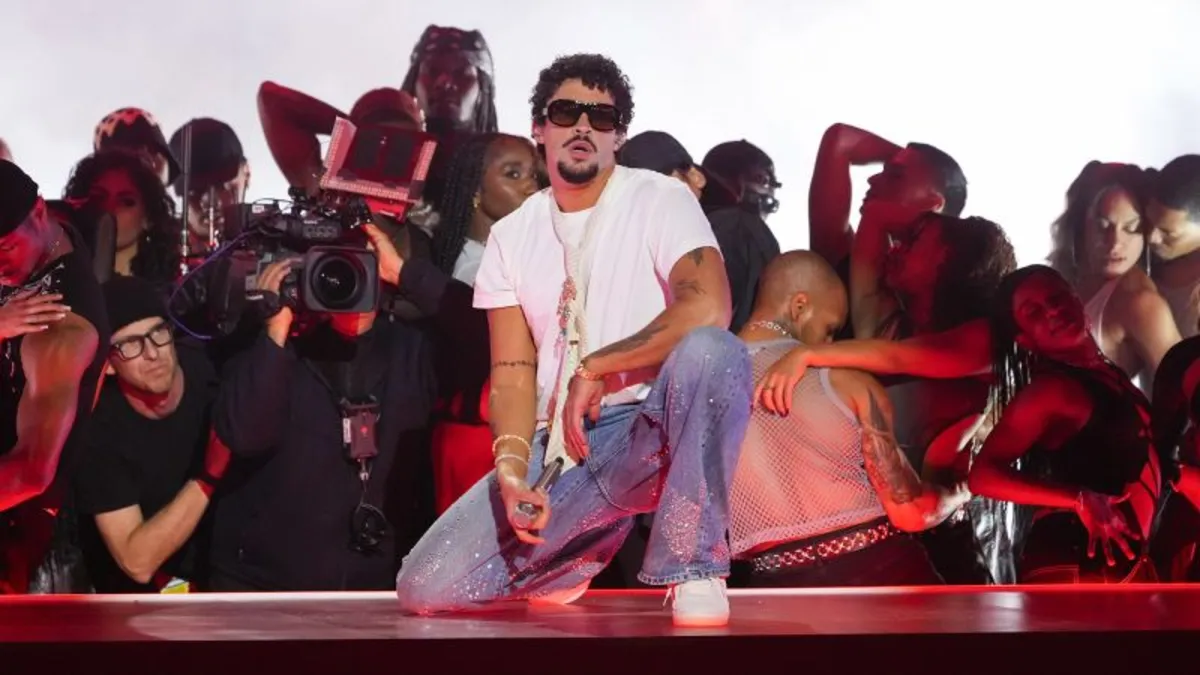
A palpable sense of excitement is sweeping across Puerto Rico as the globally renowned artist Bad Bunny embarks on his highly anticipated residency this Friday. Stores across the island are quickly selling out of memorabilia, restaurants are introducing specially themed menu items, and local news outlets are dedicating extensive coverage to what many are dubbing “Bad Bunny mania.” Born Benito Antonio Martinez Ocasio, Bad Bunny is set to perform a remarkable series of 30 concerts that resonate with Puerto Rico's unique pride and resilience amidst ongoing economic challenges, gentrification, and the enduring effects of colonialism.
The first nine concerts of this residency are exclusively for Puerto Rican residents, while the remaining shows will welcome fans from around the globe, promoting the island’s vibrant culture. All 30 performances, held at the 18,500-seat Coliseo de Puerto Rico, have sold out, reflecting immense local support. Historian Jorell Meléndez-Badillo emphasizes that prioritizing Puerto Ricans for these shows “signals that Benito is speaking personally to Puerto Ricans first and foremost.”
The concerts are not just musical events; they symbolize Puerto Rican self-reliance and the belief that the US territory can thrive independently. Javier J. Hernández Acosta, dean of the School of Arts, Design and Creative Industries at the Universidad del Sagrado Corazón in San Juan, views the residency as an opportunity to showcase Puerto Rico’s artistic talents, which he believes are crucial for fostering future economic, social, and political development.
As fans lined up outside the arena for the inaugural show, the atmosphere was electric, filled with music, food stalls, and merchandise vendors. Gilda Santos, a local fan, expressed her excitement: “(I’m) excited, super excited, super happy to see Bad Bunny live here in Puerto Rico. It’s a unique experience that can only be had here.” Another fan, Jackeline Carrasquillo from Río Grande, added, “Bad Bunny has been unique in carrying the name of Puerto Rico high. With this residency, we are here to show that Puerto Rico is the island of enchantment.”
As a territory of the United States, Puerto Rico lacks statehood status, which limits residents' voting rights in presidential elections. Despite this, Bad Bunny has consistently used his platform to amplify the often-marginalized voices of Puerto Ricans and other Latinos. His concerts will feature songs from his latest album, “Debí Tirar Más Fotos” (I Should Have Taken More Photos), addressing themes like injustice, displacement, and colonialism. The track “Lo Que Le Pasó a Hawaii” expresses concern over the potential loss of Puerto Rican identity due to displacement, poignantly reminding listeners of the historical context of Hawaii’s statehood.
Another track, “Nuevayol,” celebrates the Puerto Rican diaspora in New York and acknowledges the significant contributions of Latinos to the United States. According to the Pew Research Center, over 5 million Puerto Ricans currently reside on the US mainland, many having left the island due to rising living costs, natural disasters, and an ongoing energy crisis. Meléndez-Badillo highlights that the ethos of Bad Bunny’s album is about affirming Puerto Rican culture amidst both cultural and physical displacement.
Following the residency, Bad Bunny will embark on a world tour that conspicuously excludes the US mainland, a decision that Meléndez-Badillo interprets as a “political statement.” Speculations abound regarding this choice, especially in light of Bad Bunny’s previous criticisms of US policies affecting Latinos. When questioned about his absence from the US tour, Bad Bunny simply stated, “It’s unnecessary,” emphasizing that fans in the US have had ample opportunities to see him perform.
Hernández Acosta notes that the artist’s decision communicates a powerful message: “You are not the center of the world.” The residency empowers Puerto Ricans to celebrate their culture and resilience, especially in the aftermath of hardships like Hurricane Maria in 2017. “We have to celebrate things,” he concluded. “That’s what life is for.”